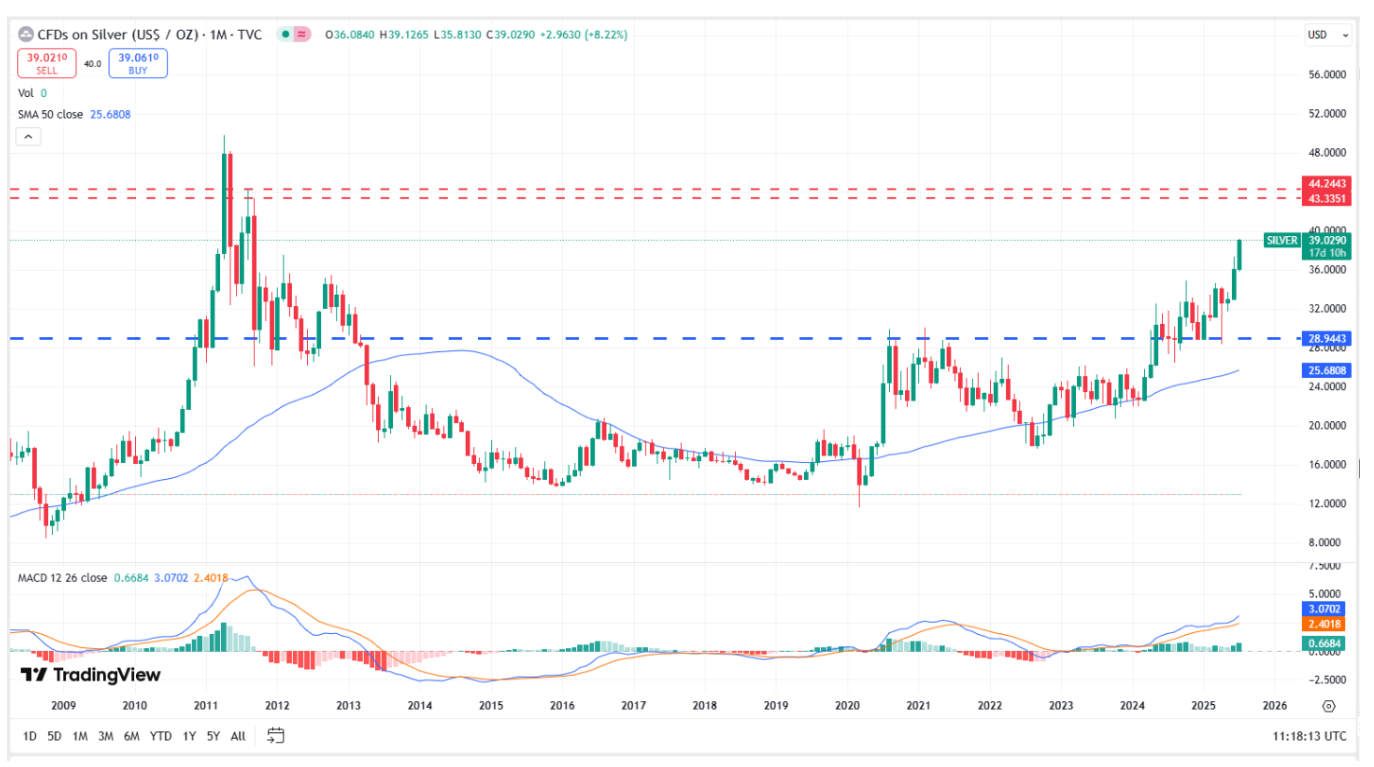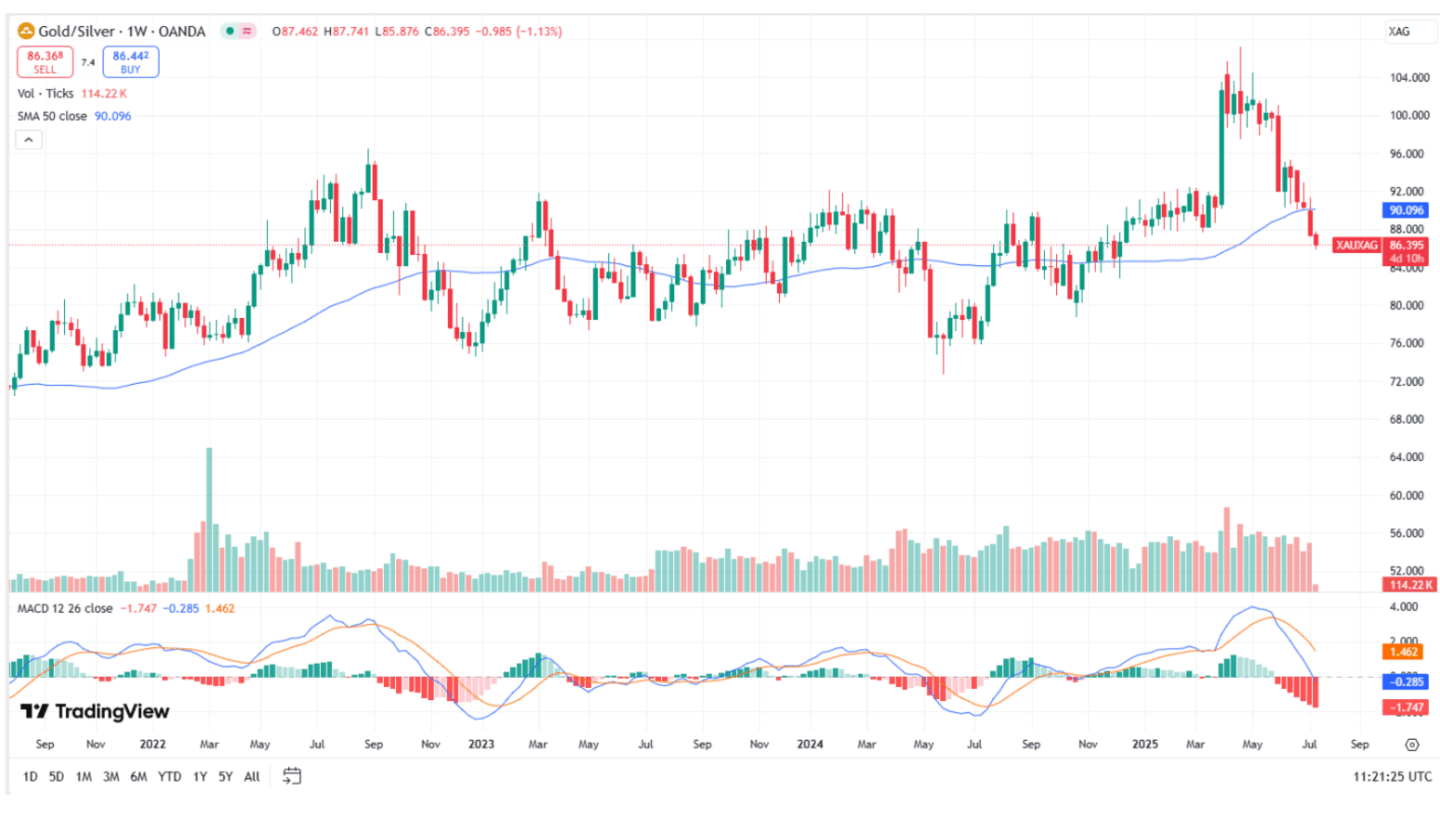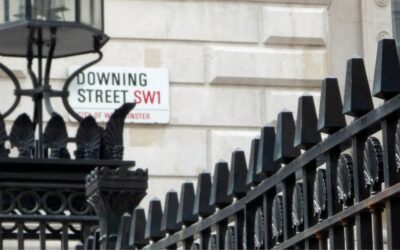Silver continues to outperform gold in the short term and is pressing highs last seen fourteen years ago. Bullish tailwinds should see both precious metals move higher over the coming weeks.
Silver is on a remarkable run this year, with a positive market backdrop helping fuel a rally of more than 20% in the precious metal. This performance reflects a number of drivers that have aligned to create ideal conditions for silver’s move higher. Industrial demand for silver remains robust, driven primarily by ongoing green technology demand. As the world continues to transition toward renewable energy and sustainable technologies, silver’s role in solar panels, electric vehicles, and other clean energy applications continues to support strong industrial consumption. This fundamental demand provides a solid foundation beneath silver’s price action.
A weakening US dollar has created an additional tailwind for precious metals. Currency debasement typically drives investors toward hard assets, and silver and gold have benefitted from this trend. The dollar’s weakness stems partly from ongoing concerns that US inflation may remain sticky due to proposed tariffs and other policy measures. These inflationary fears have triggered a renewed surge in demand for safe-haven currencies and precious metals. Investors are increasingly seeking protection against potential currency devaluation and purchasing power erosion, making silver an attractive hedge against economic uncertainty.
Adding to the complex market dynamics is the ongoing dispute between President Trump and Federal Reserve Chair Jerome Powell. This tension centres on monetary policy direction, with President Trump continuing to pressure Powell to slash US interest rates aggressively and quickly. Such political interference in monetary policy raises questions about the Federal Reserve’s independence. While it may prove difficult to remove Powell from his position, persistent market speculation that Trump might install a shadow Fed chair to advance his agenda could make Powell’s role increasingly untenable. This political pressure on the central bank creates additional uncertainty in financial markets.
Should US interest rates decline significantly, the environment would become even more favourable for a range of precious metals. Lower rates reduce the opportunity cost of holding non-yielding assets like silver and gold, potentially driving prices substantially higher. Unless the fundamental backdrop changes, silver appears well-positioned to extend its impressive rally and reach new multi-year highs in the coming weeks.
Silver Monthly Chart

The spot silver price ($39.00/oz.) is set to move higher over the near-term and test psychological chart resistance at the $40/0z. level before prior monthly highs at $43.35/oz. (September 2011) and $44.24/oz. (August 2011) come into play.
Gold/Silver Spread Weekly Chart

The gold/silver spread has moved sharply lower since early April, narrowing by around 20%. The spread is back into a multi-year trading channel, and the MACD indicator suggests the spread is becoming oversold, so further silver outperformance against gold is likely to be limited in the coming months.
Article by Nick Cawley, Contributing Analyst at Solomon Global
Further reading: Silver price hits a wall at $39 an ounce, but it is poised to move higher – Kitco News
Disclaimer: This blog is for informational purposes only and does not constitute financial advice. Buying physical gold as an investment involves risk, as the value of precious metal prices can be volatile. Historical financial performance does not necessarily give a guide of future financial performance. We recommend that you conduct your own independent research and seek professional tax, legal and financial advice before making any investment decisions.



